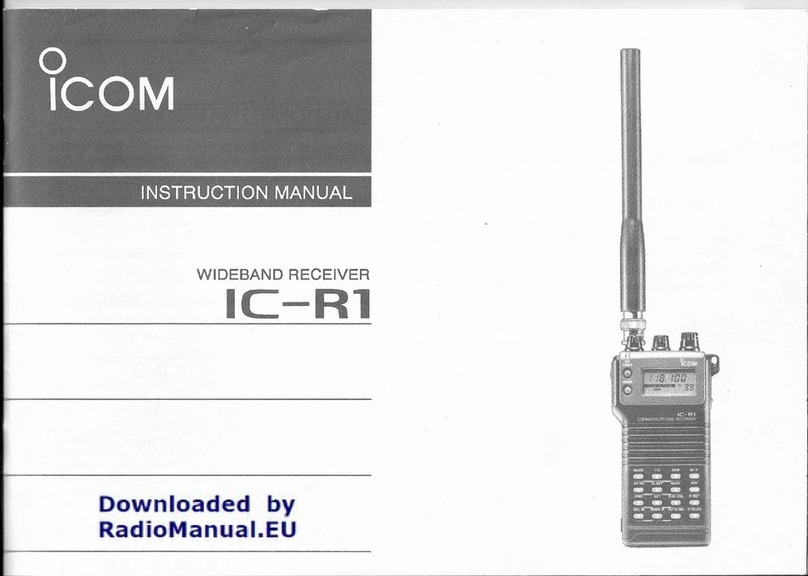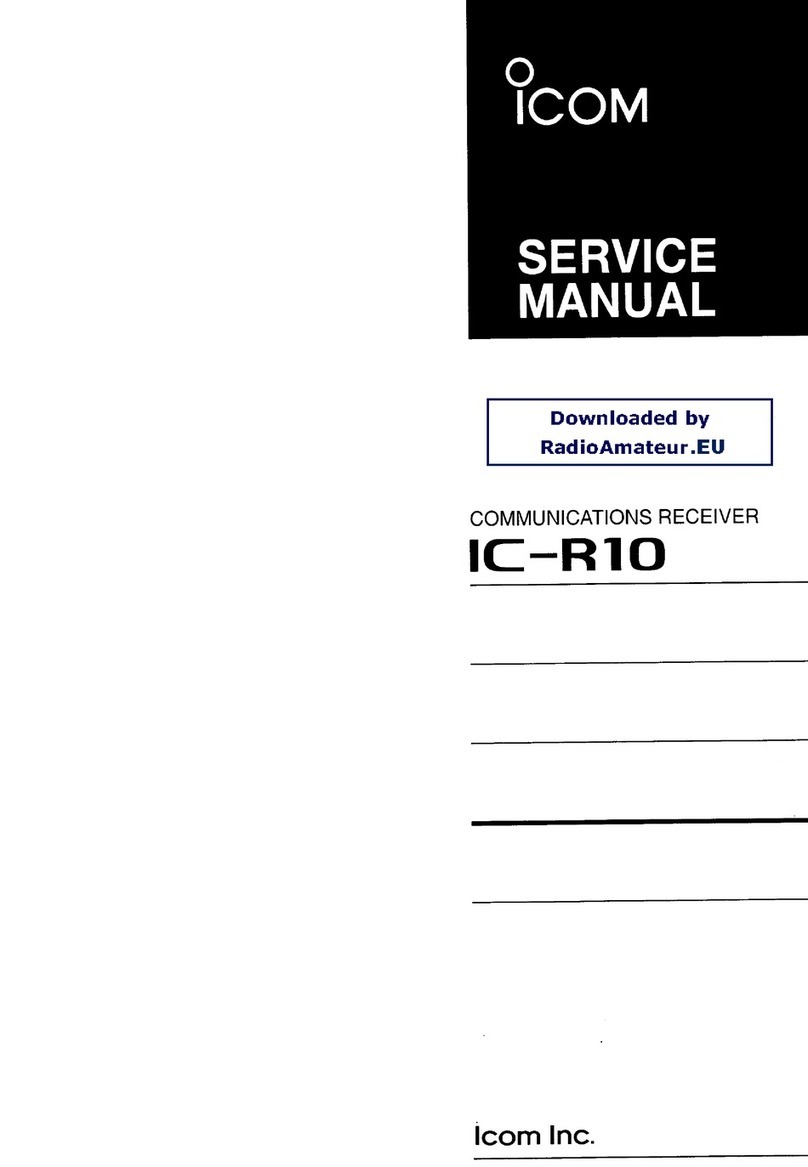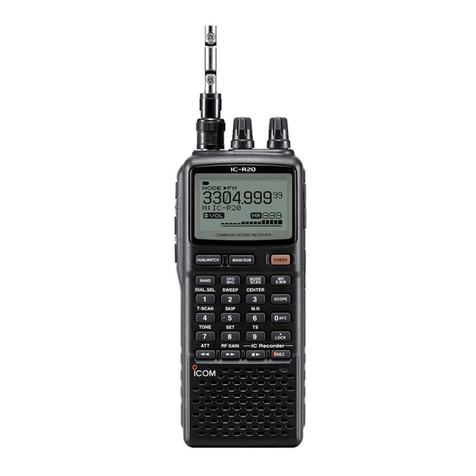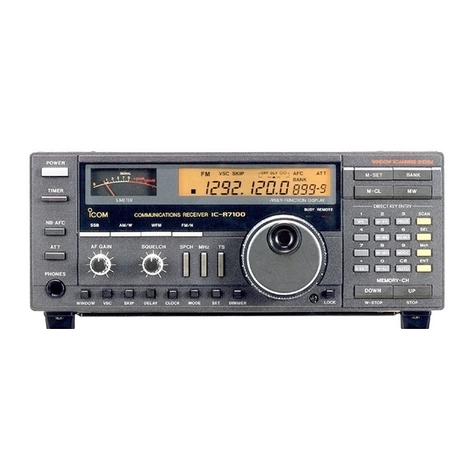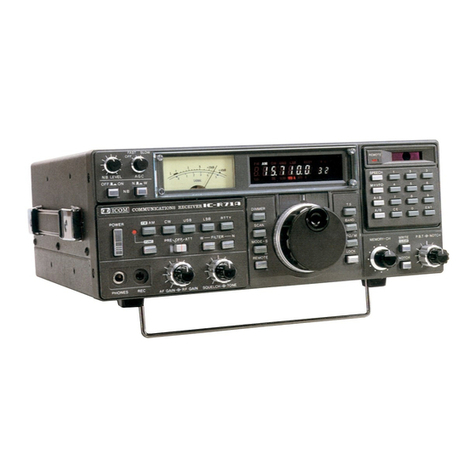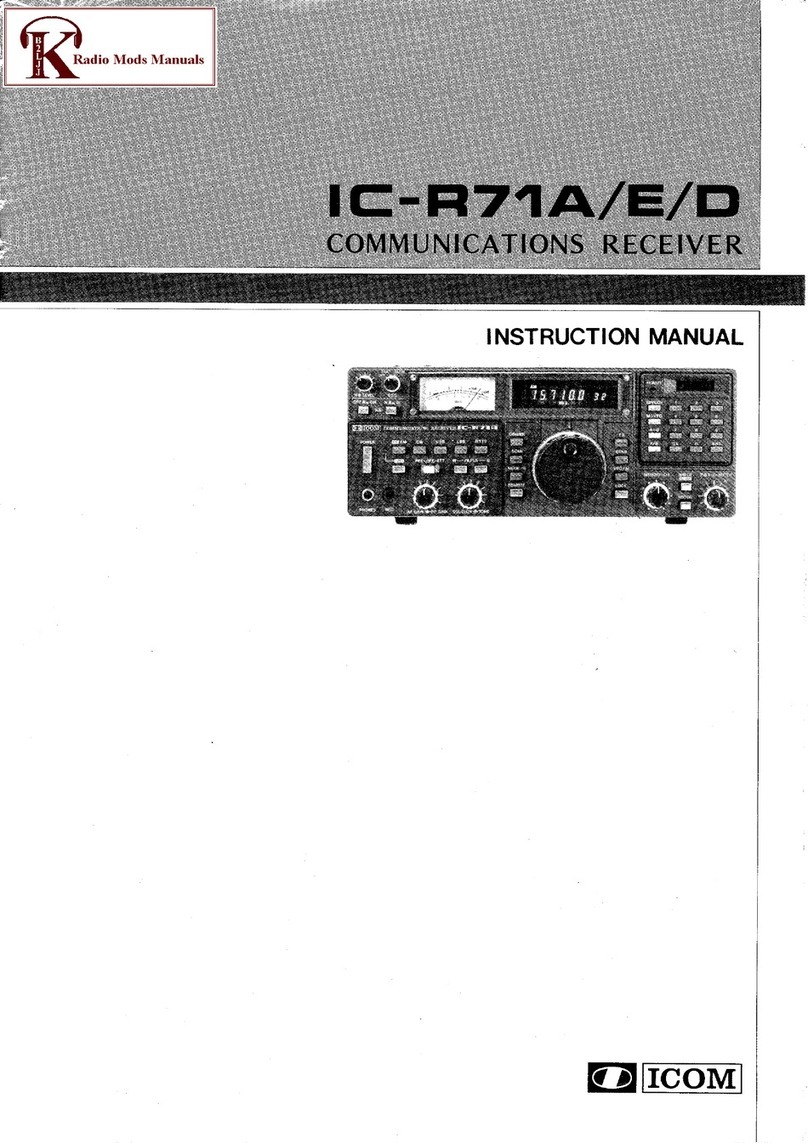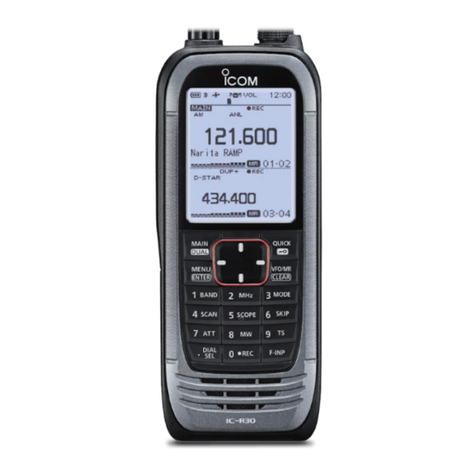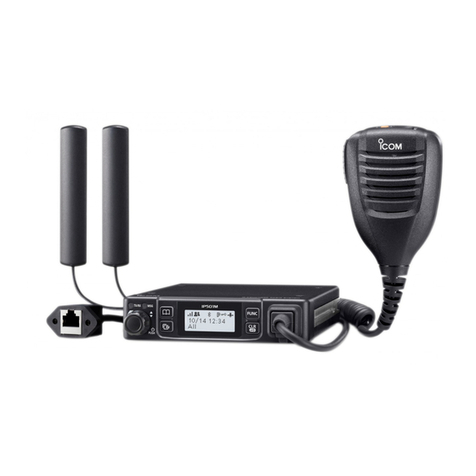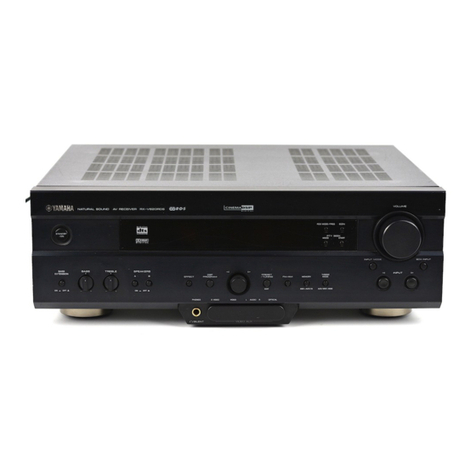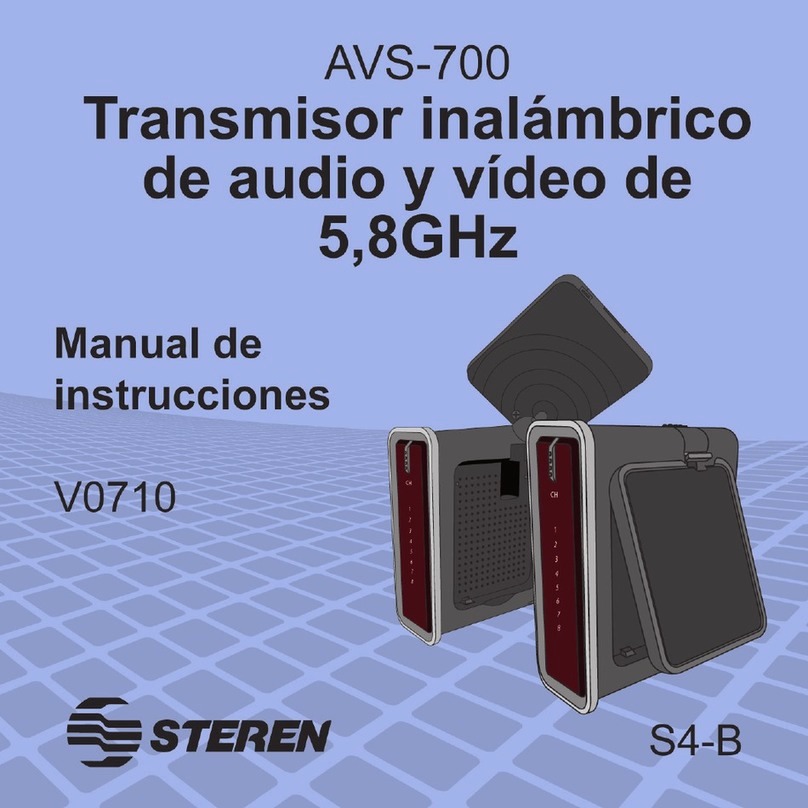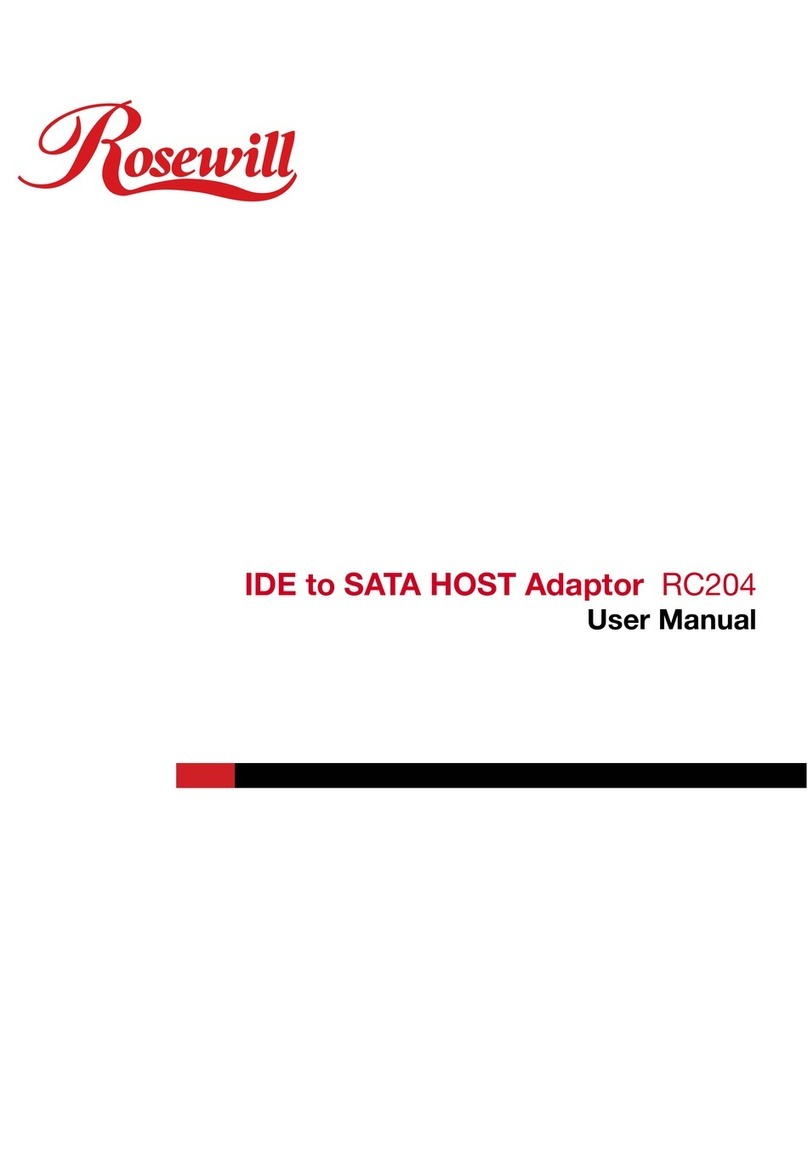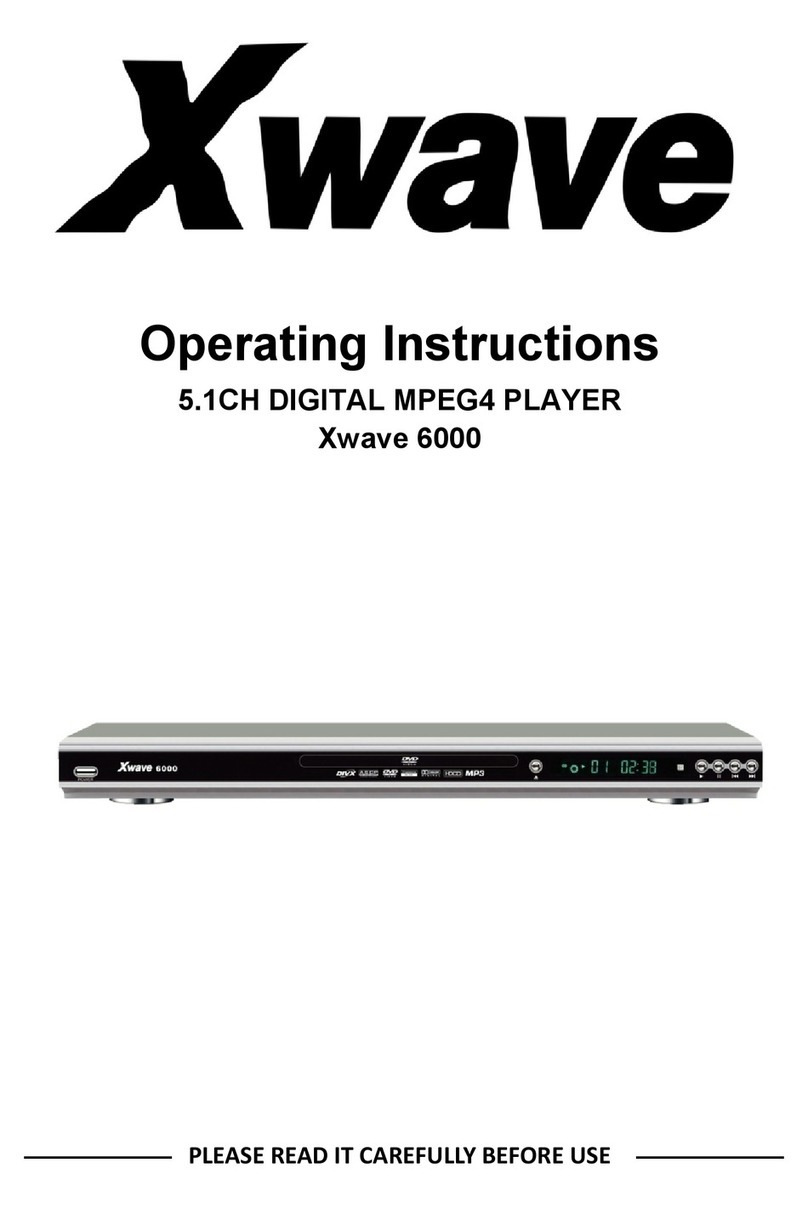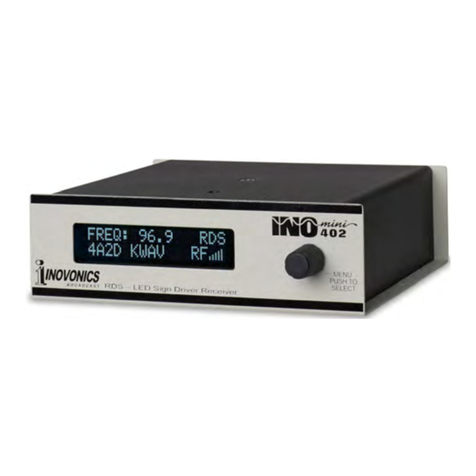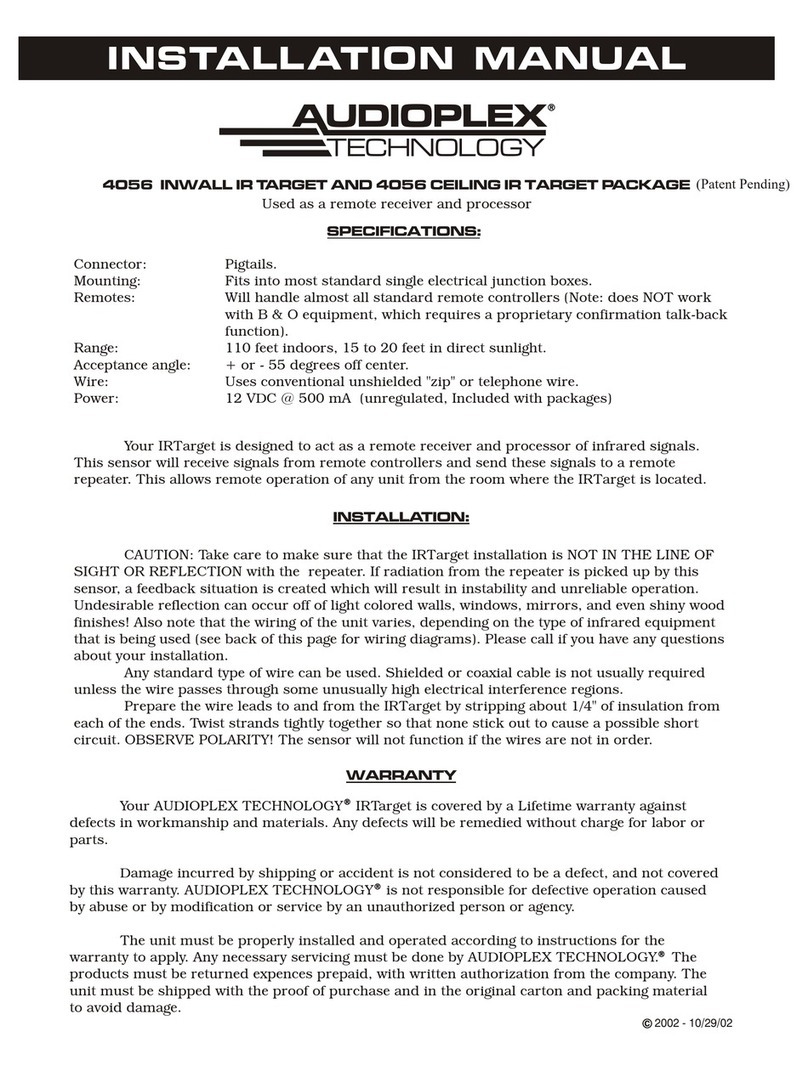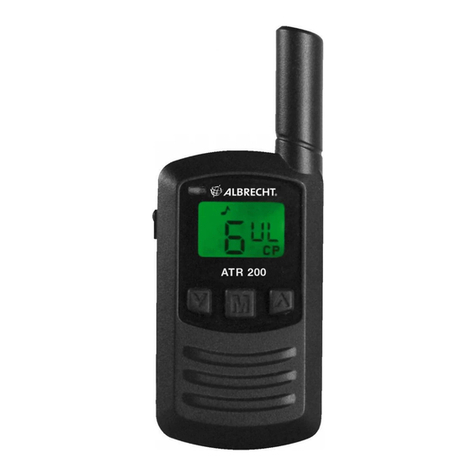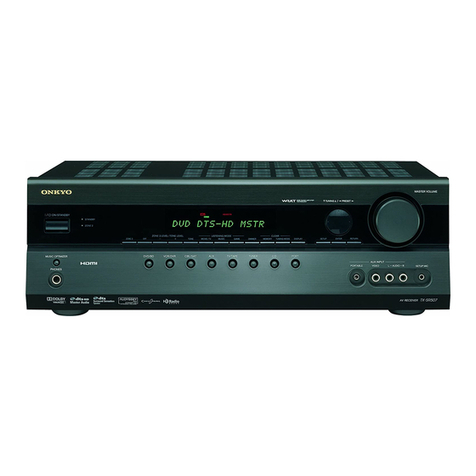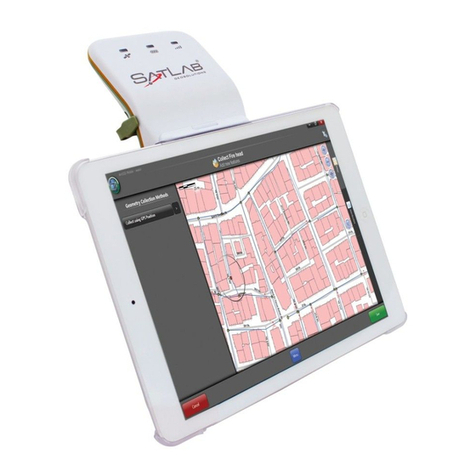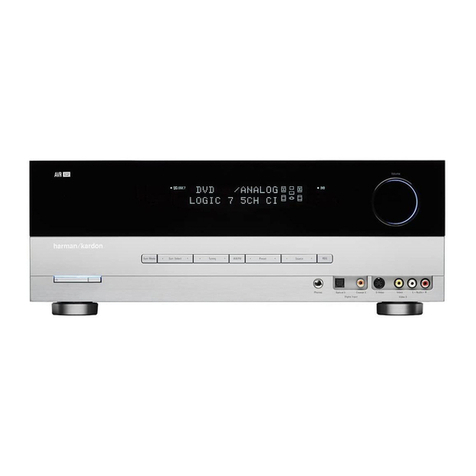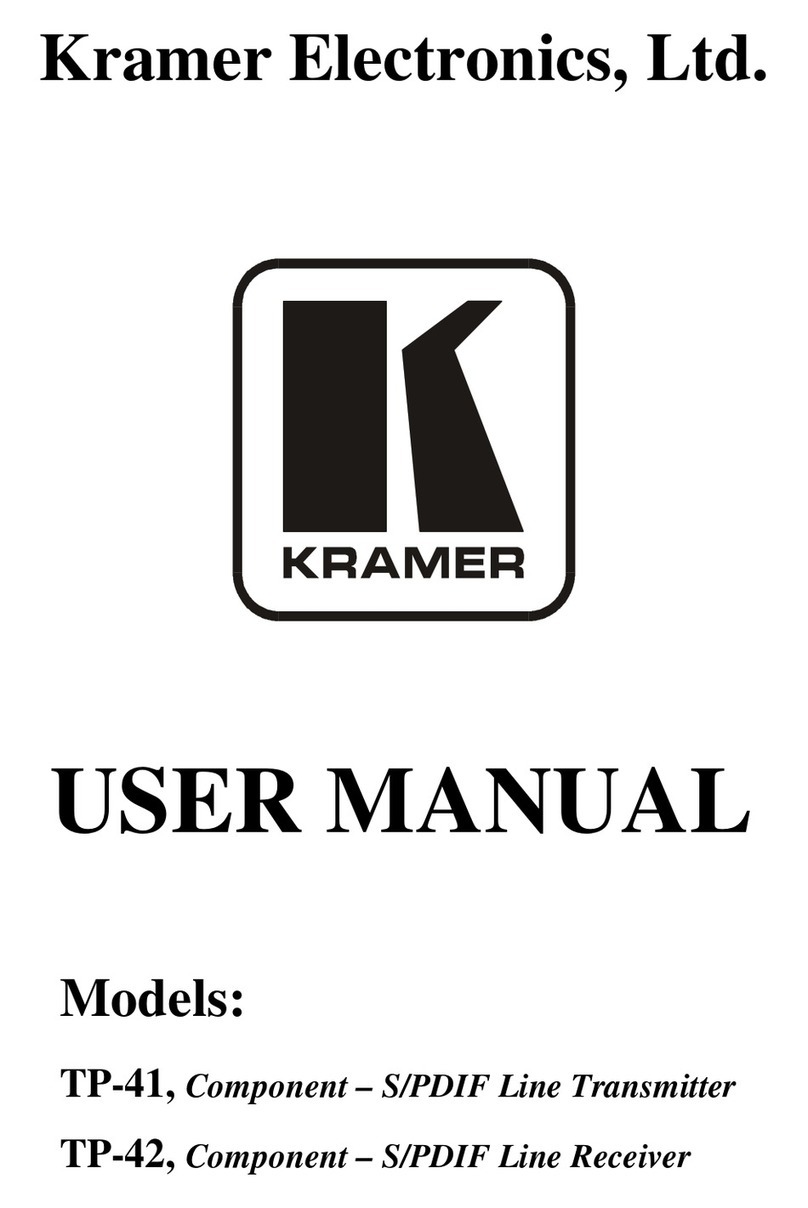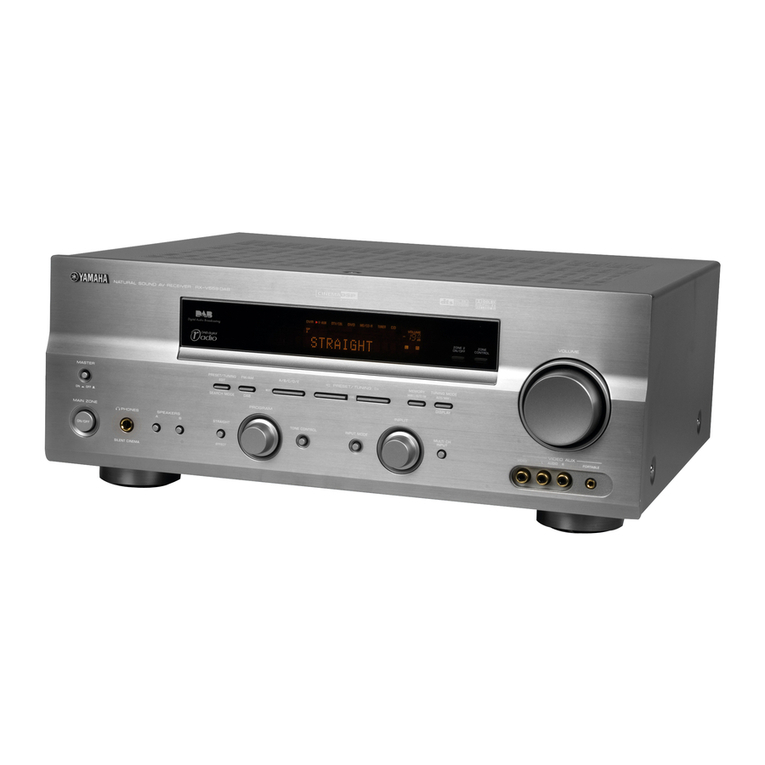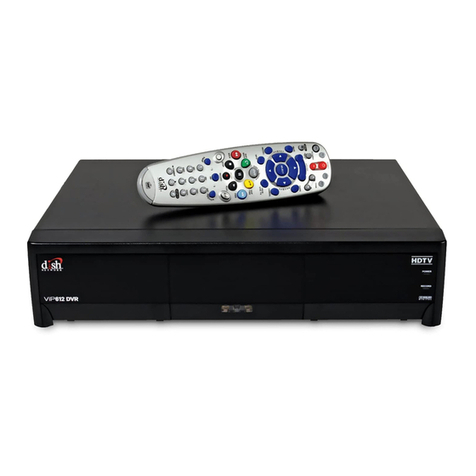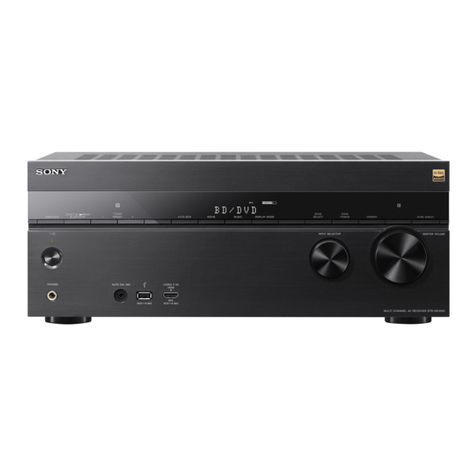Icom iC- r8500 User manual

iC-r8500
COMMUNICATIONS RECEIVER
INSTRUCTION MANUAL

i
Versions of the IC-R8500 which display the “CE”
symbol on the serial number label, comply with
the essential requirements of the European
Radio and Telecommunication Terminal Directive 1999/5/
EC, and that any applicable Essential Test Suite measure-
ments have been performed.
UNPACKING
PRECAUTIONS
IMPORTANT
READ THIS INSTRUCTION MANUAL
CAREFULLY before attempting to operate the
receiver.
SAVE THIS INSTRUCTION MANUAL. This
instruction manual contains important safety and
operating instructions for the IC-R8500.
EXPLICIT DEFINITIONS
RWARNING! NEVER connect the receiver to an
AC outlet directly. This may pose a fire hazard or
result in an electric shock. Always use an optional AC
adapter or connect to a 13.8 V DC power source.
RWARNING! NEVER connect to an AC outlet that
exceeds the suggested voltage for each AC adapter
version. This could cause a fire or ruin the AC adapt-
er and/or receiver.
RWARNING! NEVER connect the receiver to a
power source of more than 16 V DC or use reverse po-
larity. This could cause a fire or damage the receiver.This could cause a fire or damage the receiver.
RWARNING! NEVER use non-rated fuses. Non-
rated fuses could cause a fire or ruin the receiver.
RWARNING! NEVER let metal, wire or other
objects touch any internal part or connectors on the
rear panel of the receiver. This will cause electric
shock.
INDOOR USE ONLY! NEVER expose the
IC-R8500 or AC adapter to rain, snow or any liquids.
DO NOT use or place the receiver in areas with
temperatures below –10°C (+14°F) or above +50°C
(+122°F).
DO NOT place the receiver in excessively dusty
environments or in direct sunlight.
DO NOT place the receiver against walls or putting
anything on top of the receiver. This will obstruct heat
dissipation.
RESPECT other people’s privacy. Information over-
heard but not intended for you cannot lawfully be
used in any way.
Accessories included with the IC-R8500:
Qty.
qDC power cable ................................................... 1
wMini plug (2-conductor, 3.5d) .............................. 1
ePhono (RCA) plugs ............................................. 2
rFuse (FGMB 125 V 3 A; internal use) ................. 1
tFuses (FGB 3 A; for DC cable) ........................... 2
yScrews (M4 ×12 for optional MB-23) .................. 2
uScrews (C0 3 ×8 for optional MB-23 feet) .......... 4
iAllen bolts (M5 ×8 for optional MB-12) ............... 4
qw e
rt y u i
WORD DEFINITION
RWARNING! Personal injury, fire hazard or electric
shock may occur.
CAUTION Equipment damage may occur.
NOTE If disregarded, inconvenience only. No risk
of personal injury, fire or electric shock.

ii
TABLE OF CONTENTS
IMPORTANT ............................................................ i
EXPLICIT DEFINITIONS ......................................... i
PRECAUTIONS ....................................................... i
UNPACKING ............................................................ i
TABLE OF CONTENTS ........................................... ii
1 PANEL DESCRIPTION .................................... 1–6
■Front panel ................................................................. 1
■Rear panel .................................................................. 5
■Function display ......................................................... 6
2 CONNECTIONS ............................................. 7–10
■Mounting installation .................................................. 7
■Required connections ................................................. 8
■Antenna connection .................................................... 9
■Grounding .................................................................. 9
■Tape recorder connections ....................................... 10
■Transceive function .................................................. 10
■Connecting to a PC .................................................. 10
■Data demodulation terminal ..................................... 10
3 FREQUENCY SETTING .............................. 11–12
■Read me first ........................................................... 11
■Using the keypad ..................................................... 11
■Using the main dial .................................................. 12
■Lock function ............................................................. 12
4 RECEIVE FUNCTIONS ................................ 13–16
■Initial settings ............................................................ 13
■Mode selection ......................................................... 13
■Squelch function ...................................................... 14
■Functions for FM ...................................................... 14
■Functions for SSB/CW .............................................. 14
■Data communications ............................................... 16
5 MEMORY CHANNELS ................................. 17–22
■General .................................................................... 17
■Bank selection .......................................................... 17
■Channel selection .................................................... 18
■Programming ........................................................... 19
■Copy and paste (memory editing) ............................ 19
■Clearing .................................................................... 19
■Channel/bank names ............................................... 20
■Assigning channels numbers ................................... 21
6 SCANS ......................................................... 23– 28
■Operation ................................................................. 23
■Mode select function ................................................ 25
■Specifying skip channel and frequency ................... 25
■Automatic bank limit/skip functions .......................... 26
■Voice scan control function ...................................... 26
■Programming scan edge frequencies ...................... 27
■Scan speed/delay functions ..................................... 27
7 SLEEP TIMER .................................................... 29
8 SET MODE ......................................................... 30
■General .................................................................... 30
■Quick set mode items .............................................. 31
■Initial set mode items ............................................... 31
9 CONNECTOR INFORMATION .................... 33–34
10 CONTROL COMMANDS ........................... 35–36
■Command table ........................................................ 35
■Data format .............................................................. 35
11 MAINTENANCE ............................................... 37
■Disassembly ............................................................. 37
■Fuse replacement .................................................... 37
■Level adjustments .................................................... 37
■Memory backup ....................................................... 37
■CPU resetting ........................................................... 37
■Cleaning ................................................................... 37
12 OPTIONAL INSTALLATIONS..................... 38– 39
■UT-102 voice synthesizer unit ............................... 38
■FL-52A cw narrow filter ....................................... 38
■CR-293 high stability crystal unit ....................... 39
13 TROUBLESHOOTING ................................ 40–41
14 SPECIFICATIONS ............................................ 42
15 OPTIONS ......................................................... 43
16 DOC .................................................................. 44

1
1PANEL DESCRIPTION
qPOWER SWITCH [POWER]
Turns power ON and OFF.
wSLEEP/SET SWITCH [SLEEP/SET]
➥ Push momentarily to set the sleep timer (p. 29).
• Selectable times are 30, 60, 90, 120 min. or OFF.
• “ ” appears in the function display when the
sleep timer is set.
➥ Push for 1 sec. to enter quick set mode (p. 30).
• Use the [M-CH] selector and main dial to select items
and contents, respectively.
e
RECORDER REMOTE JACK [REC REMOTE] (p. 10)
Controls the running of a tape recorder for record-
ing. Connects to the REMOTE jack on a tape re-
corder.
rRECORDER JACK [REC OUT] (p. 10)
Outputs an audio signal. Connect to the AUX or
LINE IN jack on a tape recorder.
tHEADPHONE JACK [PHONES]
Accepts headphones with 4–16 Ωimpedance.
• When headphones are connected, no receive audio
comes from the speaker.
• Stereo headphones can be connected, however, output
is monaural.
yMODE SWITCHES [WFM]/[FM]/[AM]/[SSB/CW]
(p. 13)
➥ Push to select an operating mode.
• The following keys toggle between several modes:
[FM] ................ FM, FM narrow
[AM] ................ AM, AM narrow, AM wide
[SSB/CW] ....... USB, LSB, CW, optional CW narrow
➥When SSB/CW mode is selected, push [SSB/CW]
for 1 sec. to adjust the BFO frequency. (p. 15).
uNOISE BLANKER/AFC SWITCH [NB]/[AFC]
Activates the noise blanker function or automatic
frequency control function.
• The noise blanker is used for removing pulse-type noise
when SSB, CW or AM mode is selected (p. 15).
• The automatic frequency control tunes the displayed fre-
quency automatically when an off-center frequency is re-
ceived. It activates when FM or WFM is selected (p. 14).
iAUDIO FREQUENCY GAIN CONTROL
[AF GAIN] (p. 13)
Rotate clockwise to increase the audio output; rotate
counterclockwise to decrease the audio output.
oAUTOMATIC GAIN CONTROL [AGC] (p. 15)
Toggles the time constant of the AGC circuit be-
tween “slow” and “fast.”
• When “fast” is selected, “AGC-F” appears.
• Cannot be used in FM or WFM modes.
!0 SQUELCH CONTROL [SQUELCH] (p. 14)
Varies the squelch threshold level (to mute noise
when receiving no signal).
!1 IF SHIFT CONTROL [IF SHIFT] (p. 14)
Shifts the center frequency of the receiver’s IF
passband to reject interfering signals.
• Cannot be used in FM, WFM and AM modes.
MODE
WFM
NB/AFC AGC 10dB 20dB
FM AM
APF
TS
TS
SPCH
SSB/CW MEMO
SEL SKIP VSC DLY
SCAN/
NAME
SCAN SET
PROG AUTO PRIO
M-SET BANK
M-CL MW
AF GAIN SQUELCH
PHONES
REC OUT
SLEEP/
REC
REMOTE
IF SHIFTAPF DELAY/SPEEDM-CH
SET
LOCK
D/S
1QZ
GHI
PRS TUV WXY
ENT
BANK
BANK
JKL MNO
ABC DEF .; ,
4
7 8
0 CE
ENT
M-CH
.
9
5 6
2 3
COMMUNICATION RECEIVER
iC-r8500
POWER
SIGNAL
S1 3 5 7 9 +
20dB
+
60dB
@0
q
w
e
r
t
!9
y i o !0 !1 !2 !3 !4 !5 !6 !8
!
7
u
FM
RECV
BANK
10-ATT-20
APF-NAGC-FAFCNB SEL-CH SKIP-CH
OFF
kHz
DLY
SLEEP
LOCK
M
ICOM IC-R8500
S-meter squelch
threshold
Noise squelch
threshold (not
available in SSB,
CW, WFM and
AM narrow modes)
• Signals below the
S-meter level
are muted.
■Front panel

2
1
PANEL DESCRIPTION
!2 AUDIO PEAK FILTER CONTROL [APF] (p. 15)
Adjusts the audio peak filter setting to pick up a de-
sired audio frequency. Only valid when the [APF]
switch is ON.
• Clockwise rotation adjusts the filter setting higher; coun-
terclockwise rotation adjusts the filter setting lower.
!3 ATTENUATOR SWITCHES [10dB]/[20dB]
Push to activate one of the attenuators.
➧Push [10dB] to activate the 10 dB attenuator.
➧Push [20dB] to activate the 20 dB attenuator.
➧Push [10dB] + [20dB] to activate the 30 dB attenuator.
• 10 dB and 30 dB attenuator cannot be used below 500 kHz.
!4 AUDIO PEAK FILTER SWITCH [APF] (p. 15)
➥ Push momentarily to toggle the audio peak filter
circuit ON and OFF.
• Use the [APF] control to adjust the center of the
audio peak passband.
➥ When the audio peak filter circuit is ON, push for
1 sec. to toggle the filter setting between normal
and narrow.
• ‘Narrow’ is available for SSB, CW and AM only.
!5 SPEECH/LOCK SWITCH [SPCH/LOCK]
➥ Push momentarily to activate the voice synthe-
sizer function and have the displayed frequency
announced.
• An optional UT-102 speech synthesizer unit is neces-
sary to activate the voice synthesizer function (p. 38).
• Automatic announcement at signal detection during
scan is available. Refer to the “REC SPCH” item on
p. 31 for details.
➥Push for 1 sec. to activate the lock function (p. 12).
• Push for 1 sec. again to cancel the lock function.
• The lock function action can be selected in set mode
to cover the main dial only, or to cover both the main
dial and front panel switches.
!6 TUNING STEP SWITCHES [TS▲]/[TS▼] (p. 12)
Select the tuning step for the main dial. Push [TS▲]
to select a larger tuning step; push [TS▼] to select
a smaller tuning step.
• 10 Hz, 50 Hz, 100 Hz, 1 kHz, 2.5 kHz, 5 kHz, 9 kHz,
10 kHz, 12.5 kHz, 20 kHz, 25 kHz, 100 kHz and 1
MHz are selectable.
• Programmable tuning steps can be set between 0.5
and 199.5 kHz.
➠To set programmable tuning steps, enter the desired
steps via the keypad, then push [TSY]or [TSZ].
!7 MAIN DIAL
Changes the operating frequency, set mode
contents, etc.
!8 BRAKE ADJUSTMENT SCREW
Adjusts the main dial tension.
!9 FUNCTION DISPLAY (p. 6)
Shows the selected frequency, mode, memory
name, etc.
@0 S-METER
➥Shows the strength of the received signal.
➥Shows the squelch threshold level when the
[SQUELCH] is rotated past the center position.
MODE
WFM
NB/AFC AGC 10dB 20dB
FM AM
APF
TS
TS
SPCH
SSB/CW MEMO
SEL SKIP VSC DLY
SCAN/
NAME
SCAN SET
PROG AUTO PRIO
M-SET BANK
M-CL MW
AF GAIN SQUELCH
PHONES
REC OUT
SLEEP/
REC
REMOTE
IF SHIFTAPF DELAY/SPEEDM-CH
SET
LOCK
D/S
1QZ
GHI
PRS TUV WXY
ENT
BANK
BANK
JKL MNO
ABC DEF .; ,
4
7 8
0 CE
ENT
M-CH
.
9
5 6
2 3
COMMUNICATION RECEIVER
iC-r8500
POWER
SIGNAL
S1 3 5 7 9 +
20dB
+
60dB
@0
q
w
e
r
t
!9
y i o !0 !1 !2 !3 !4 !5 !6 !8
!
7
u
FM
RECV
BANK
10-ATT-20
APF-NAGC-FAFCNB SEL-CH SKIP-CH
OFF
kHz
DLY
SLEEP
LOCK
M
ICOM IC-R8500
Center frequency
is shifted up.
Center frequency
is shifted down.

@1 MEMORY SET SWITCH [M-SET] (p. 19)
Used to ‘copy and paste’ the displayed frequency
into another memory channel.
• The first push is used to copy (
M
appears), and the sec-
ond push is used to paste (
M
disappears).
• Frequency, mode, tuning step, memory name, etc. can
be programmed into a temporary memory.
@2 MEMORY CLEAR SWITCH [M-CL] (p. 19)
Push and hold to clear the contents of the dis-
played memory.
• Bank names cannot be cleared.
@3
MEMORY WRITE SWITCH [MW] (p. 19)
Push and hold to store the displayed frequency,
mode, tuning step, etc. into the selected memory
channel.
@4 BANK SWITCH [BANK] (p. 17)
➥ Push momentarily to toggle the bank limit func-
tion ON and OFF (p. 18).
• While “BANK” appears, only memory channels within
the selected bank can be selected via the [M-CH] se-
lector.
➥ Push for 1 sec. to increase/decrease the number
of memory channels in the selected bank (p. 21).
@5 MEMORY CHANNEL SELECTOR [M-CH] (p. 18)
➥ Selects a memory channel in normal use.
• Clockwise rotation selects higher memory channel
numbers; counter clockwise rotation selects lower
memory channel numbers.
➥ Selects a set mode item when quick set mode or
initial set mode is selected (p. 30).
@6 DELAY/SPEED CONTROL [DELAY/SPEED] (p. 28)
Adjusts the scan delay time or scan speed
depending on the [DLY ] switch setting.
• When scan delay time is assigned, this control adjusts
the scan delay time (scan pausing interval) during sig-
nal reception. This setting is effective when “ ”
is selected for the scan resume condition.
• When scan speed is assigned, this control adjusts the
scan speed. In this case, scan delay time is determined
while setting.
@7 SCAN SWITCHES [SCAN ]
All of these switches are related to the scan func-
tion in some way as follows:
[MEMO] (p. 23)
➥Push momentarily to start/stop memory scan.
➥Push numeral keys, then this key to start memo-
ry scan in the specified bank.
➥Push this key, then a mode switch to activate
mode select scan function.
➥Push for 1 sec. to set automatic bank and skip
functions.
• The bank limit function and/or memory skip functions
are activated automatically when “AUTO” is selected
and scan is started.
[SEL] (p. 23)
➥Push momentarily to start/stop memory select
scan.
➥Push for 1 sec. to set the memory channel as a
select channel.
[PROG] (p. 24)
➥Push momentarily to start/stop programmed scan.
➥Push numeral keys, before or after pushing this
key to start programmed scan using the speci-
fied scan edge group.
• 10 scan edge groups are available.
➥Push for 1 sec. to program scan edges for pro-
grammed scan.
3
1PANEL DESCRIPTION
MODE
WFM
NB/AFC AGC 10dB 20dB
FM AM
APF
TS
TS
SPCH
SSB/CW MEMO
SEL SKIP VSC DLY
SCAN/
NAME
SCAN SET
PROG AUTO PRIO
M-SET BANK
M-CL MW
AF GAIN SQUELCH
PHONES
REC OUT
SLEEP/
REC
REMOTE
IF SHIFTAPC DELAY/SPEEDM-CH
SET
LOCK
D/S
1QZ
GHI
PRS TUV WXY
ENT
BANK
BANK
JKL MNO
ABC DEF .; ,
4
7 8
0 CE
ENT
M-CH
.
9
5 6
2 3
COMMUNICATION RECEIVER
iC-r8500
POWER
@2 @3@1 @4 @5 @6
@7
@8
SIGNAL
S1 3 5 7 9 +
20dB
+
60dB
FM
RECV
BANK
10-ATT-20
APF-NAGC-FAFCNB SEL-CH SKIP-CH
OFF
kHz
DLY
SLEEP
LOCK
M
ICOM IC-R8500

4
1
PANEL DESCRIPTION
[SKIP] (p. 25)
➥Push momentarily to toggle the skip function ON
and OFF for any scan.
• Automatic skip activation is available with the [MEMO]
switch.
➥Push for 1 sec. to set the memory channel as a
skip channel.
[AUTO] (p. 24)
➥Push momentarily to start/stop auto write scan.
➥Push for 1 sec. to select the written memories
condition for the auto write scan.
• Two conditions are available, clear auto-written
memories before scan starts; and, keep auto written
memories before scan start.
[VSC] (p. 26)
Push to toggle the voice scan control function ON
and OFF.
• The VSC function resumes the scan when a detected sig-
nal does not contain voice components.
• “VSC” appears while the voice scan control function is
activated.
[PRIO] (p. 25)
➥Push momentarily to start/stop priority scan.
• Priority scan can be used in combination with other
scans.
➥Push for 1 sec. to enter the priority channel pro-
gramming condition.
[DLY ] (p. 27)
➥Push momentarily to select a scan resume con-
dition.
➧“OFF” is underscored: scan pauses on a signal until it
disappears, then resumes 3 sec. after that.
➧“DLY” is underscored: scan resumes according to
the [DELAY/SPEED] control setting. When a signal
disappears, scan resumes 3 sec. later.
➧“
∞
” is underscored: scan is cancelled when receiving
a signal.
➥ Push for 1 sec. to enter the delay time/scan
speed setting condition.
• The function of the [DELAY/SPEED] control can be
selected.
@8 KEYPAD
The keypad can be used for several functions as below:
• Keypad then [ENT] (then [MW])
— Direct frequency input.
• Keypad then [M-CH]
— Memory channel selection.
• [CE • NAME] then keypad
— Alphanumeric input for memory, bank names, etc.
• Keypad then [TSY] or [TSZ]
— Arbitrary tuning step setting.
• Keypad then [MEMO] or [SEL]
— Specify memory bank then start memory scan or se-
lect memory scan.
• Keypad then [PROG] or [AUTO]
— Specify scan edge group, then start programmed
scan or auto write scan.
MODE
WFM
NB/AFC AGC 10dB 20dB
FM AM
APF
TS
TS
SPCH
SSB/CW MEMO
SEL SKIP VSC DLY
SCAN/
NAME
SCAN SET
PROG AUTO PRIO
M-SET BANK
M-CL MW
AF GAIN SQUELCH
PHONES
REC OUT
SLEEP/
REC
REMOTE
IF SHIFTAPC DELAY/SPEEDM-CH
SET
LOCK
D/S
1QZ
GHI
PRS TUV WXY
ENT
BANK
BANK
JKL MNO
ABC DEF .; ,
4
7 8
0 CE
ENT
M-CH
.
9
5 6
2 3
COMMUNICATION RECEIVER
iC-r8500
POWER
@2 @3@1 @4 @5 @6
@7
@8
SIGNAL
S1 3 5 7 9 +
20dB
+
60dB
FM
RECV
BANK
10-ATT-20
APF-NAGC-FAFCNB SEL-CH SKIP-CH
OFF
kHz
DLY
SLEEP
LOCK
M
ICOM IC-R8500

5
1PANEL DESCRIPTION
■Rear panel
qRS-232C CONNECTOR (p. 10)
Connects an RS-232C cable. An RS-232C cable
can be used to connect the IC-R8500 to a PC. In
this way commands can be sent to the receiver via
the PC.
wCI-V REMOTE CONTROL JACK (p. 10)
Allows connection to an Icom CI-V system trans-
ceiver or another receiver for the transceive func-
tion. Also connects to a PC with several receivers
for command control via an optional CT-17 ci-v
level converter.
eIF OUT JACK
Outputs a 10.7 MHz IF signal with 9 V DC for an
external equipment.
rAGC JACK (p. 16)
This jack has functions which are selectable
through internal receiver settings.
• Outputs an AGC signal for an external equipment
(default).
• Outputs audio detected signal without de-emphasis for
9600 bps data detection (FM mode only).
tDC 13.8 V JACK (p. 8)
➥ Plug in the jumper connector here when using
an optional AC adapter.
➥ Connects to a 13.8 V DC power source using the
supplied DC cable when the AC adapter is not
connected.
yEXTERNAL SPEAKER JACK
Connects an 8 Ωexternal speaker.
• When an external speaker is connected, the internal
speaker does not function.
uDC IN JACK (p. 8)
Connects an optional AC adapter.
• A regulator circuit has been designed between this con-
nector and the DC 13.8 V jack.
• Be sure the jumper connector is connected to the DC
13.8 V jack.
iHF 50 ΩANTENNA CONNECTOR (p. 8)
Connects an antenna to cover the frequency range
below 30 MHz.
• Use a coaxial cable and a PL-259 connector.
• Be sure this connector is selected in quick set mode
(p. 31).
oGROUND TERMINAL (p. 9)
Connect this terminal to a ground.
!0 HF 500 ΩANTENNA CONNECTOR (p. 8)
When a 500 Ωlong wire antenna is used for HF band
receiving, this connector is used instead of the 50 Ω
antenna connector.
• Set the “HF ANT” item to 500 to use this connector
(p. 31).
!1 VHF/UHF ANTENNA CONNECTOR (p. 8)
Connects an antenna to cover the frequency range
over 30 MHz.
• Use a coaxial cable and type-N connector.
q w e r y u
t
o
i
!0!1

6
1
PANEL DESCRIPTION
■Function display
qREMOTE INDICATOR (p. 35)
Appears when a level control command is received from a
PC via CI-V data.
• When this indicator appears, the control knob’s setting
is ignored.
• This indicator will disappear when the control knob is rotated.
wMODE INDICATORS (p. 13)
Show the operating mode.
eFREQUENCY READOUT
Shows the operating frequency.
rSKIP INDICATOR (p. 25)
➥Appears when the skip function is activated.
➥Flashes during scan when the skip function is
activated by the auto skip function.
tVSC INDICATOR (p. 26)
Appears when the voice scan control function is
activated.
y
SCAN RESUME CONDITION INDICATORS (p. 27)
Show the selected scan resume condition.
uTUNING STEP INDICATORS (p. 12)
Show the selected tuning step.
• “
P
” appears when a programmable tuning step is selected.
iTEMPORARY MEMORY INDICATOR (p. 19)
➥Appears when [M-SET] is pushed to indicate
that a frequency is being temporarily saved.
➥Disappears when the temporary memory is
pasted into another memory channel.
oMEMORY CHANNEL READOUT (p. 17)
Shows the selected memory channel number.
!0 SKIP CHANNEL INDICATOR (p. 25)
Appears when the selected memory channel is set
as a skip channel.
!1 MEMORY NAME INDICATORS (p. 20)
Display names programmed into a memory, or scan
group.
!2 SELECT CHANNEL INDICATOR (p. 23)
Appears when the selected memory channel is set
as a select channel.
!3 BANK NUMBER INDICATOR (p. 17)
Shows the selected memory bank number.
!4 BANK INDICATOR (p. 18)
➥Appears when the bank limit function is activated.
➥Flashes during scan when the bank limit func-
tion is activated by the auto bank function.
!5 BANK NAME INDICATOR (p. 20)
Displays names programmed into a bank.
!6 AUDIO PEAK FILTER INDICATOR (p. 15)
“APF” or “APF-N” appears when the audio peak fil-
ter function is activated.
!7 ATTENUATOR INDICATORS
Appear when the RF attenuator is activated.
!8 AUTOMATIC GAIN CONTROL INDICATOR (p. 15)
AGC-F appears when AGC fast is selected; no indi-
cation appears when AGC slow is selected.
!9 RECEIVE INDICATOR
Appears while receiving.
@0 FM CENTER INDICATORS (p. 14)
Appear when the received signal is not tuned to its
center frequency.
@1 NOISE BLANKER INDICATOR (p. 15)
Appears when the noise blanker circuit is activated.
@2 AFC INDICATOR (p. 14)
Appears when the automatic frequency control
function is activated in either FM or WFM modes.
@3 LOCK INDICATOR (p. 12)
Appears when the main dial or front panel switches
are locked.
@4 SLEEP INDICATOR (p. 29)
Appears when the sleep timer is set.
REMOTE
WFM
RECV
AMUSBLSBCW
BANK
10-ATT-20
APF-NAGC-FAFCNB SEL-CH SKIP-CH
WIDE NAR SKIP VSC OFF
MHz kHz
DLY
SLEEP
LOCK
M
P
q w e r t y
u
io!
0
!
1
!
2
!
3
!
4
!
5
!
6
!
7
!
8
!
9
@
0
@
0
@1
@2
@3
@4

7
2CONNECTIONS
■Mounting installation
DLocation
Select a location for the receiver that allows adequate
air circulation and access to the front and rear panels.
Do not place in areas subject to extreme heat, cold,
or vibrations, or near TV sets, radios and electromag-
netic sources.
Be careful of the internal temperature of the receiver.
Installation into a rack or other enclosed area may
increase the internal temperature over the useable
temperature range. Specifications are not guaranteed
under such conditions.
DReceiver stand
The base of the IC-R8500 has an adjustable stand for
desktop use. Set the stand to one of two angles de-
pending on your operating conditions.
DOptional bracket and carrying handle
• Mounting bracket
An optional mounting bracket is available to install the
radio under a table, on a wall, in a vehicle, etc.
Select an area to mount the receiver keeping in mind
that the weight of the IC-R8500 is approx. 7 kg.
• Carrying handle
An optional handle allows you to easily carry and
transport the receiver.
Attach the MB-23 carrying handle with the supplied
rubber feet as shown.
CAUTION: The screws supplied with the MB-23
cannot be used with the IC-R8500. Use the screws
supplied with the IC-R8500 when attaching the
MB-23.
Flat washer
Spring
washer
Allen bolt
supplied with
the IC-R8500.

8
2
CONNECTIONS
■Required connections
IC-R8500
Supplied DC power cable
Unplug the jumper plug
from the [DC13.8V] jack.
AC adapter AD-55/A/S/V*
Connect
either power
source
Ground connection (p. 9)
HF antennaLong wire antennaVHF/UHF wide band
antenna
Computer control
(p. 10)
External speaker
(p. 43)
High speed data
connection (p. 16)
0.1–30 MHz coverage0.1–30 MHz coverage30 MHz –2 GHz coverage
The optional AH-7000 is
available for 25 MHz to
1300 MHz coverage.
The optional AH-8000 is
available for 100 MHz to
3300 MHz coverage.
Select the active antenna connector in quick set mode (p. 31)
*The AD-55, AD-55A, AD-55S
and AD-55V have different
shapes.
The jumper plug must
be connected to the
[DC 13.8V] jack.

9
2CONNECTIONS
■Antenna connection
Antennas play a very important role in receiver
operation. Connecting a poor quality antenna to the
IC-R8500 will result in less than optimum performance.
The IC-R8500 requires at least 2 antennas for full
frequency coverage: one for 0.1 to 30 MHz and one
for 30 to 2000 MHz.
DUsing a long wire antenna for HF bands
The IC-R8500 has a 500 Ωphono (RCA) antenna
connector for the HF bands. When using a long wire
antenna, instead of a 50 Ωmatched antenna, use
one as long as possible (at least 10 m, 33 ft) and
select the active connector as follows:
qPush [SLEEP/ ] for 1 sec. to enter quick set
mode.
wRotate the [M-CH] selector to select the “HF
ANT” item.
eRotate the main dial to select the antenna connector.
rPush [SLEEP/ ] momentarily to exit quick set
mode.
■Grounding
To prevent accidents involving electricity and interfer-
ence from transceivers, ground the receiver through
the [GND] terminal on the rear panel.
For best results, connect a heavy gauge cable to a
water pipe or long, earth-sunk copper rod. Make the
distance between the [GND] terminal and ground as
short as possible.
RWARNING! NEVER use a gas pipe or electri-
cal conduit pipe for grounding.
30 mm
10 mm (soft solder)
10 mm
1–2 mm
solder solder
Soft
solder
Coupling ring
PL-259 CONNECTOR INSTALLATION EXAMPLE
q e
r
w
Slide the coupling ring
down. Strip the cable
jacket and soft solder.
Slide the connector
body on and solder it.
Screw the coupling ring
onto the connector body.
Strip the cable as
shown at left. Soft
solder the center
conductor.
(10 mm ≅3/8 in)
15 mm
Clamp
3 mm 6 mm
Center conductor
Washer
Nut Rubber gasket
TYPE-N CONNECTOR INSTALLATION EXAMPLE
q e
r
w
Slide the nut, washer,
rubber gasket and
clamp over the
coaxial cable, then cut
the end of the cable
evenly.
Soft solder the center
conductor. Install the
center conductor pin and
solder it.
Carefully slide the plug
body into place aligning
the center conductor pin
on the cable. Tighten the
nut onto the plug body.
•
Be sure the center
conductor is the same
height as the plug body.
Strip the cable and
fold the braid back
over the clamp.
(10 mm ≅
3
/
8
in)
Plug body
No space
Solder hole
500 HF ANT

10
2
CONNECTIONS
■Tape recorder connections
The [REC OUT] jack has 350 mV rms/4.7 kΩoutput
for connection to other audio equipment.
■Transceive function
Icom CI-V transceivers or receivers can be connect-
ed via the [REMOTE] jack. The frequency and mode
become the same* when either radio is changed.
* When a set frequency is out-of-range for one of the con-
nected transceivers or receivers, the connected radio’s
frequency/mode does not change.
■Connecting to a PC
■Data demodulation terminal
See p. 16 for details regarding connection and opera-
tion.
The IC-R8500 can connect directly to a personal
computer providing control of multiple functions
such as instant frequency/name programming using
appropriate software. See pgs. 35, 36 for the control
command table.
Personal computer
IC-R8500
RS-232C
cable
13
25 14
2.RXD (data input)
3.TXD (data output)
1
20 6
8
IC-R8500
SCAN SET
[REC
REMOTE]
[REC OUT]
350 mVrms
4.7 kΩ
[AUX IN] or
[LIVE IN] jack
✔Convenient:
When an optional UT-102 voice synthesizer unit
is installed, detected frequencies during scanning
can be recorded. See pgs. 31, 32 for settings.
[REC REMOTE] jack: Grounds when a signal is
received and squelch opens. If a tape recorder
has a control terminal, this jack can be used for
recording control. (2 A/DC max.)
Connect to [REMOTE] jack
• Be sure the “CIV TRAN” item is turned ON in initial set mode (p. 32).
A DB9/DB25 adapter may be
required depending on the PC’
s connector.

11
3FREQUENCY SETTING
■Read me first
The IC-R8500 uses memory channels for storage
of frequencies (as well as mode, tuning steps, etc.).
When turning power OFF or changing memory chan-
nels, the previously displayed frequency cannot be
recalled unless it has been stored into a memory
channel. Therefore, when you want to keep a dis-
played frequency for later recall, you must program it
into a memory channel by pushing [MW] for 1 sec.
✔Convenient:
Use [M-SET] to program a displayed frequency
(and its mode, etc.) without overwriting the currently
selected memory. See p. 19.
■Using the keypad
qPush the numeral keys on the keypad to enter the
MHz digits for the desired frequency.
• If a key is mistakenly pushed, push [CE
≈
] and start
again from the beginning.
• When entering the same MHz digits as the displayed
frequency, this step can be skipped.
wPush [ •
Ω
].
ePush the numeral keys to enter the frequency dig-
its below 1 MHz.
• If a key is mistakenly pushed, push [CE
≈
] and start
again from the beginning.
rPush [ENT] to set the input frequency.
• When pushing [ENT] after entering the MHz digits,
zeros are automatically entered for the kHz digits.
[EXAMPLE]: SETTING THE FREQUENCY USING THE KEYPAD
• To set to 145.00 MHz 14 5 ENT
• To set to 1296.040 MHz 12 9 6 •0 4 ENT
• To set to 850 kHz
(0.85 MHz) 0 8 5
•ENT
• To change from 1296.040
to 1296.850 MHz 85
•ENT
Push [MW] for 1 sec. after tuning.
FM
kHz
USR-A BLANK
“BLANK” appears in the memory name area until
[MW] is pushed for 1 sec.
OFF DLY

12
3
FREQUENCY SETTING
■Using the main dial
Rotate the main dial to change the frequency.
• The frequency changes in increments determined by the
selected tuning step (see below).
• When the lock function is activated (“LOCK” appears) the
frequency cannot be changed.
DSelecting a tuning step
13 preset tuning steps are available plus 1 programma-
ble tuning step (see below).The preset tuning steps are:
10 50 100 Hz
1 2.5 5 9 10 12.5 20 25 100 kHz
1 MHz
Push [TSY] or [TSZ] to change the selected tuning
step.
DSetting the programmable tuning step
The programmable tuning step can be set between
the range of 0.5–199.5 kHz (in 0.5 kHz steps) for each
memory independently.
qPush the numeral keys on the keypad that corre-
spond to the tuning step you wish to program.
wPush [TSY] or [TSZ] to set the programmable
tuning step to the selected value.
• The programmable tuning step is automatically selected
as the active tuning step.
■Lock function
The lock function electronically locks the indicated
frequency from accidentally being changed.
Push [SPCH ] for 1 sec. to toggle the lock func-
tion ON and OFF.
• “LOCK” appears in the function display while the
lock function is activated.
DSetting the lock function coverage
The lock function can be set to lock the main dial only
or, the main dial and most of the front panel switches.
qPush [SLEEP ] for 1 sec. to enter quick set
mode.
wRotate the [M-CH] selector to select the “LOCK”
indication.
eRotate the main dial to set the lock function cover-
age to “DIAL” or “PANEL.”
rPush [SLEEP ] momentarily to exit quick set
mode.
SCAN SET
[TSY]
[TSZ]
MHz kHz
P
Tuning step
indicators
MHz kHz
Pappears when the programmable tuning step
is selected.
or appears to indicate the units of
the selected tuning step.
[EXAMPLE]: Setting the programmable tuning step to 50 kHz.
(or )
kHz
P
kHzkHz
50
TS TS
FM
kHz
LOCK
*ICOM IC-R8500
OFF DLY
LOCK DIAL
kHz
FM OFF DLY

13
4RECEIVE FUNCTIONS
■Initial settings
■Mode selection
Push one of the mode keys one or more times to
select the desired mode. Consult the table below for
basic characteristics of each mode.
The indications in the table appear in the bank name
area for 1 sec. after an operating mode is selected.
SCAN SET
FM
RECV
BANK
10-ATT-20
APF-NAGC-FAFCNB
kHz
SLEEP
LOCK
*ICOM IC-R8500
OFF DLY
[AF GAIN]: 10 o’clock
[APF]: center
[IF SHIFT]: center
Push [SLEEP]
Push [NB/AFC]
Push [AGC] Push [10dB] and/or [20 dB]
Push and hold
[SPCH • LOCK]
Before turning power ON, set controls and switches as indicated below:
After turning power ON,
check the display for indications below and remove as follows:
[SQUELCH]: max. CCW
MODE BANDWIDTH INDICATION DESCRIPTION
FM
12 kHz/–6 dB Amateur bands, citizens band, utility communications, marine bands,
etc. FM-narrow can only receive narrow FM signals; normal FM can
receive both normal and narrow FM signals.
AM
5.5 kHz/–6 dB
Broadcasting, amateur bands, citizens band, air band, etc. AM-wide
mode is used for clear audio reception. Signals however, may be
received with interference.
SSB 2.2 kHz/–6 dB Shortwave broadcasting, amateur bands, etc. Use USB for normal
SSB reception; LSB is not normally used.
CW
2.2 kHz/–6 dB Morse code communications. Use this mode to receive radio-tele-
type, etc. by shifting the receive frequency.
WFM 150 kHz/–6 dB TV broadcasting, FM broadcasting, etc. TV and FM broadcasting
cannot be accessed in FM mode because their signals are too wide.
5.5 kHz/–6 dB
normal
narrow
2.2 kHz/–6 dB
medium
narrow
12 kHz/–6 dB
wide
USB
LSB
normal
500 Hz/–6 dB
narrow
(option)

The IC-R8500 has 2 types of squelch, noise squelch
and S-meter squelch.
Noise squelch: Only acts on noise; has good sen-
sitivity. It can be adjusted for reception of weak sig-
nals. Strong signals exceeding a certain level will
always cause the squelch to open.
S-meter squelch: S-meter squelch does not open
for weak signals but can be adjusted to open for sig-
nals over a wide range of strengths. Once you have
selected a threshold point in a range, the IC-R8500
will open for all signals above this point.
To adjust the squelch, rotate [SQUELCH].
• Clockwise rotation closes the squelch (sets the thresh-
old point higher); counterclockwise rotation opens the
squelch (for reception of weak signals).
FM signals have a wide bandwidth which makes
them easy to receive. However, you may be tuned
off-center resulting in audio distortion. The IC-R8500’
s off-center indicators appear in such cases, making
it easy to fine tune to the center of the frequency.
AFC stands for automatic frequency control. The AFC
circuit automatically compensates the tuning when a
receive frequency drifts or goes off frequency.
When one of the off-center indicators appears, the
IC-R8500 can adjust the receive frequency auto-
matically—when the AFC function is turned ON and
an off-center frequency is received, the frequency
in the display automatically changes to reflect the
center of the signal.
14
4
RECEIVE FUNCTIONS
■Squelch function
■Functions for FM
DCenter indicator
S-meter squelch
threshold
Noise squelch
threshold (not
available in SSB,
CW, WFM and
AM narrow modes)
• Signals below the
S-meter level
are muted.
When [SQUELCH] is
rotated past center,
the S-meter shows
the signal strength
needed to open the
squelch.
SIGNAL
S1 3 5 7 9 +
20dB
+
60dB
RECV
One of these indicators appears when the received
signal is off-center.
RECV
When one of these indicators appears, the
displayed frequency is automatically moved to the
center frequency.
AFC
DAFC
The IF shift function electronically changes the
center of the IF (intermediate frequency) passband
frequency to reject interference. The IF shift is not
available in FM and AM modes.
qAdjust the [SHIFT] control for a minimum interfer-
ence signal level.
• The audio tone may be changed while the IF shift is in
use.
wSet the shift control to its center position when
there is no interference.
■Functions for SSB/CW
DIF shift
Shifts low Center Shifts high
IF SHIFTAPFIF SHIFTAPF IF SHIFTAPF

15
4RECEIVE FUNCTIONS
The noise blanker reduces pulse-type noise such as
that generated by automobile ignition systems. This
function is not effective for FM and WFM mode or
for non pulse-type noise and wide width pulses.
Push [NB] to toggle the noise blanker ON and OFF.
• “NB” appears when the noise blanker is activated.
NOTE: When a strong signal is received while
the noise blanker is ON, the output audio may be
distorted. In such cases, the noise blanker should
be turned OFF.
The APF (audio peak filter) adjusts the peak fre-
quency of the received audio. The APF can be used
for adjusting the audio response. The IC-R8500 has
two selectable width filters.* Use the appropriate fil-
ter width for optimum receiving.
qPush the [APF] switch.
wRotate the [APF] control to adjust the peak fre-
quency.
eTo change the filter width*, push [APF] for 1 sec.
*Available for SSB, CW and AM only.
BFO stands for beat frequency oscillator. This func-
tion is useful in conjunction with the IF shift function.
When eliminating interference with the IF shift func-
tion, the audio characteristics of the received signal
are often changed. Use the BFO adjustment func-
tion to adjust the audio quality of the received signal
to that desired.
qPush [SSB/CW] to select SSB or CW mode.
wPush [SSB/CW] for 1 sec. to activate the function.
• BFO appears.
eRotate [M-CH] to adjust the BFO.
• –1.2 kHz to +1.2 kHz are selectable.
AGC stands for automatic gain control. This function
controls receiver gain to produce a constant audio
output level even when the received signal strength
is varied by fading, etc. Use AGC slow for normal
phone operation; AGC fast for receiving data and
searching for signals. AGC time constant cannot be
changed in FM and WFM modes.
Push [AGC] to toggle between AGC fast and slow.
• AGC-F appears when AGC fast is selected; no
indicator appears when AGC slow is selected.
DNoise blanker
DAudio peak filter
DBFO adjustment
DAGC function
BFO 0.00kHz
ICOM-
RECV
AGC-F
NB OFF NB ON
500 1k 2k 5k [Hz]
–40
–30
–20
–10
0
[dB]
500 1k 2k 5k [Hz]
–40
–30
–20
–10
0
[dB]
APF is selected APF-N is selected
[NB/AFC]
switch
SCANSET
[APF] control
[APF]
switch SCAN SET
[SSB/CW]
switch
SCANSET
[M-CH]
selector
[AGC]
switch
SCANSET
BFO shift can be set for USB,
LSB and CW separately.

TU or TNC
AF IN
SQUELCH IN
to [REC OUT]
to [REC REMOTE]
SCANSET
2-conductor 3.5(d) plugs
Personal computer
16
4
RECEIVE FUNCTIONS
■Data communications
DConnections
DReceiving method
• To use the [AGC] socket for AF output
Change the internal jumper plug as illustrated at
right.
• The output is obtained for FM mode only.
• Usable for 9600 bps only.
• Refer to p. 37 for a description of opening the case.
qConnect a terminal unit as above.
wSelect FM mode (or USB, CW modes for HF
band data communications).
eSet the receiver to the desired frequency as below.
rSet the connected terminal unit to the appropri-
ate settings.
• Refer to the terminal unit’s instructions.
Rear
panel
TU or TNC
to [AGC]
RCA plug
Personal computer
[Audio IN] or
[Detector IN]
• For high speed data (9600 bps) reception in FM mode
• For regular speed data (1200 bps or lower) reception in any mode
Frequency settings depend on the mode used.
FM mode: [Setting frequency(displayed freq.)]=[Desired freq.]
USB mode: [Setting frequency(displayed freq.)]=[Desired freq.]–[Center of Mark and Space freq.]
CW narrow mode: [Setting frequency(displayed freq.)]=[Desired freq.]–[Center of Mark and Space freq.]+ [600 Hz]
LSB mode (for amateur RTTY): [Setting frequency(displayed freq.)]=[Desired freq.] + [Mark freq.]
AGC output
(default)
AF direct detector
output
200 mVrms/4.7 kΩ

17
5MEMORY CHANNELS
To select regular channel banks:
Push [M-CH • BANK
▲
] or [ENT • BANK
▼
], one or
more times to select the desired channel bank.
• The bank indicator shows the selected bank.
• Push and hold [BANK
▲
] or [BANK
▼
] to quickly cycle
through the channel banks in the order to , FREE,
AUTO and SKIP.
NOTE: The FREE bank is initially blank and
therefore cannot be selected. In order to select it
at least 1 channel must be programmed into the
FREE bank. See p. 21.
✔Convenient: Bank names
The default names of “USR-A” to “USR-T” can be
set to your own preference. Refer to p. 20 for pro-
gramming.
To select the programmed scan edge:
Push [PROG] for 1 sec.
• PROG and channel number (0P1 to 9P2) appear.
■Bank selection
The IC-R8500 has 1000 regular memory channels,
plus 20 programmable scan edge channels and 1 pri-
ority channel. 8-digit memory names are programmed
into all 1000 channels and 5-digit bank names are
programmed into 20 user banks for convenient recall
and organisation of frequencies. Moreover, memory
channels can store mode information, a tuning step,
and ATT (attenuation) information.
NOTE: When memory channels without informa-
tion (blank channels) are selected, the frequency
is not displayed. Only the memory channel
number appears.
The table below gives a general overview of the
IC-R8500’s memory channels.
BANK
INITIAL CONTENTS
USAGE
40 memories ×
20 banks
For normal use. Frequency, mode, tuning step, name and ATT information can
be programmed. The number of channels in each bank is user-assignable.
Banks cannot be deleted (they must contain at least 1 channel).
100 memories
Frequencies detected during auto memory write scan are memorised into this
bank in sequence. Mode and tuning step are written at the same time. Note that
when the written memories condition is set as CL&START and auto write scan
is started, all memories in this bank are cleared.
100 memories
Undesired signals such as from beacons, control-coded signals, etc., can be
programmed to be skipped during programmed scan and auto memory write
scan. When [MW] is pushed for 1 sec. while scan is paused, the displayed fre-
quency is programmed into this bank regardless of the selected bank.
Blank
For temporary storage when assigning channels to banks. Deleted channels
(contents have been cleared) are stored in this bank until being assigned to
another bank. This bank does not appear when no channel are assigned.
20 memories (fixed)
Memorize scan edge frequencies. 10 pairs of scan edges (0P1 to 9P2) are pro-
grammable (upper and lower scan edges). Mode and tuning step are automati-
cally equalised to the last programmed channel in a pair.
■General
ENT
BANK
BANK
.; ,
ENT
M-CH
BANK
BANK
BANK
BANK
USR-A BLANK
BLANK
BLANK
BLANK
USR-B
BANK
BLANK
USR-T
AUTO
BANK BLANK
FREE
SKIP
*NONAME*
PROG
AUTO
SKIP
FREE
PROG
Other manuals for iC- r8500
5
Table of contents
Other Icom Receiver manuals
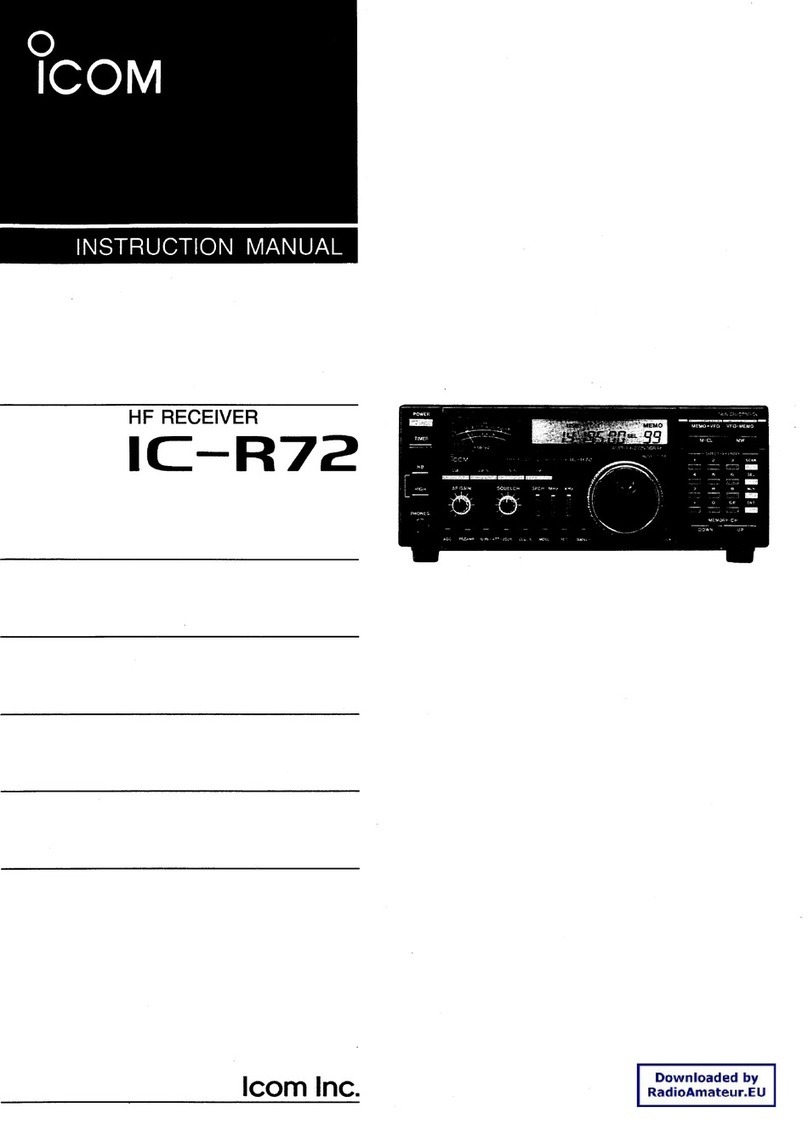
Icom
Icom IC-R72 User manual
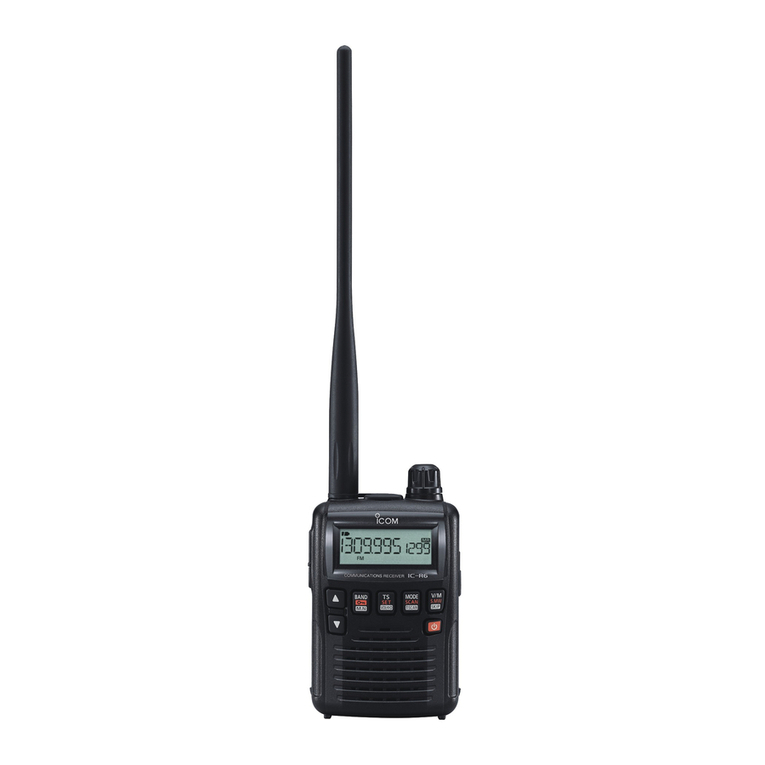
Icom
Icom IC-R6 User manual
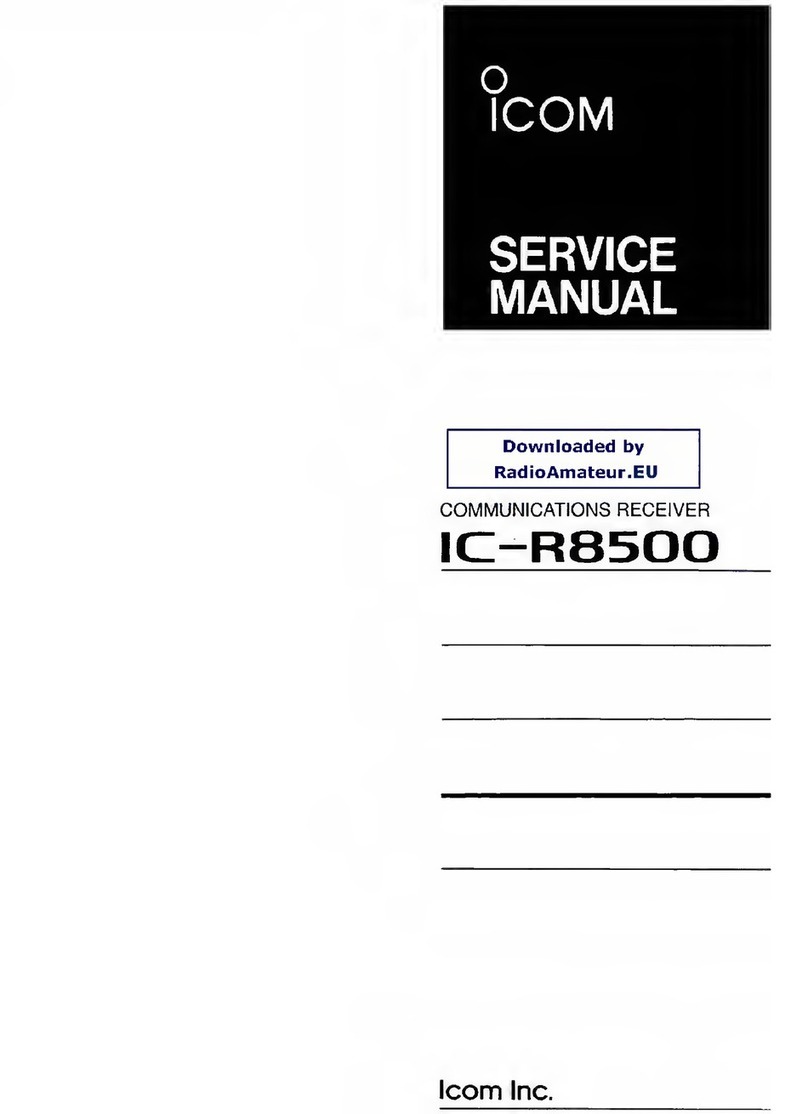
Icom
Icom iC- r8500 User manual
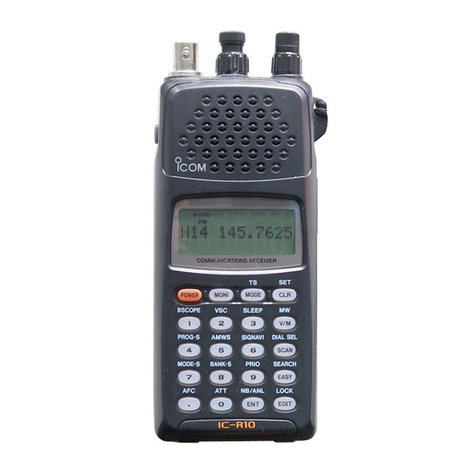
Icom
Icom IC-R10 User manual
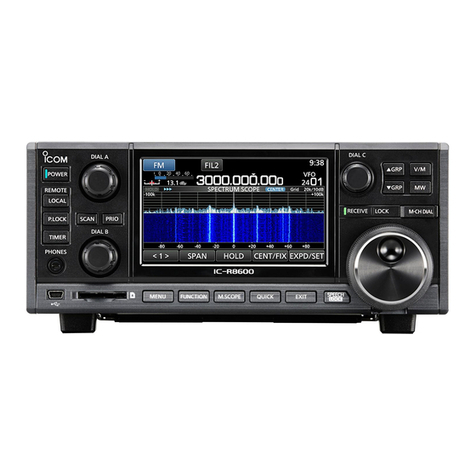
Icom
Icom IC-R8600 User manual
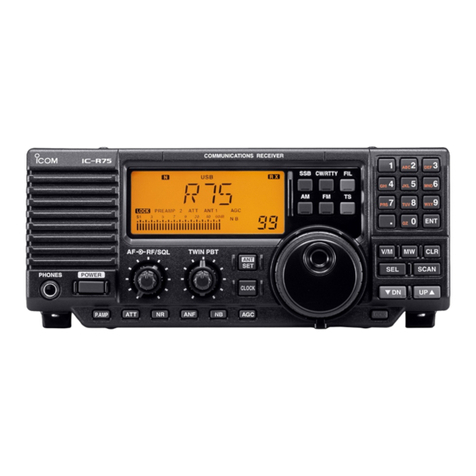
Icom
Icom IC-R75 User manual
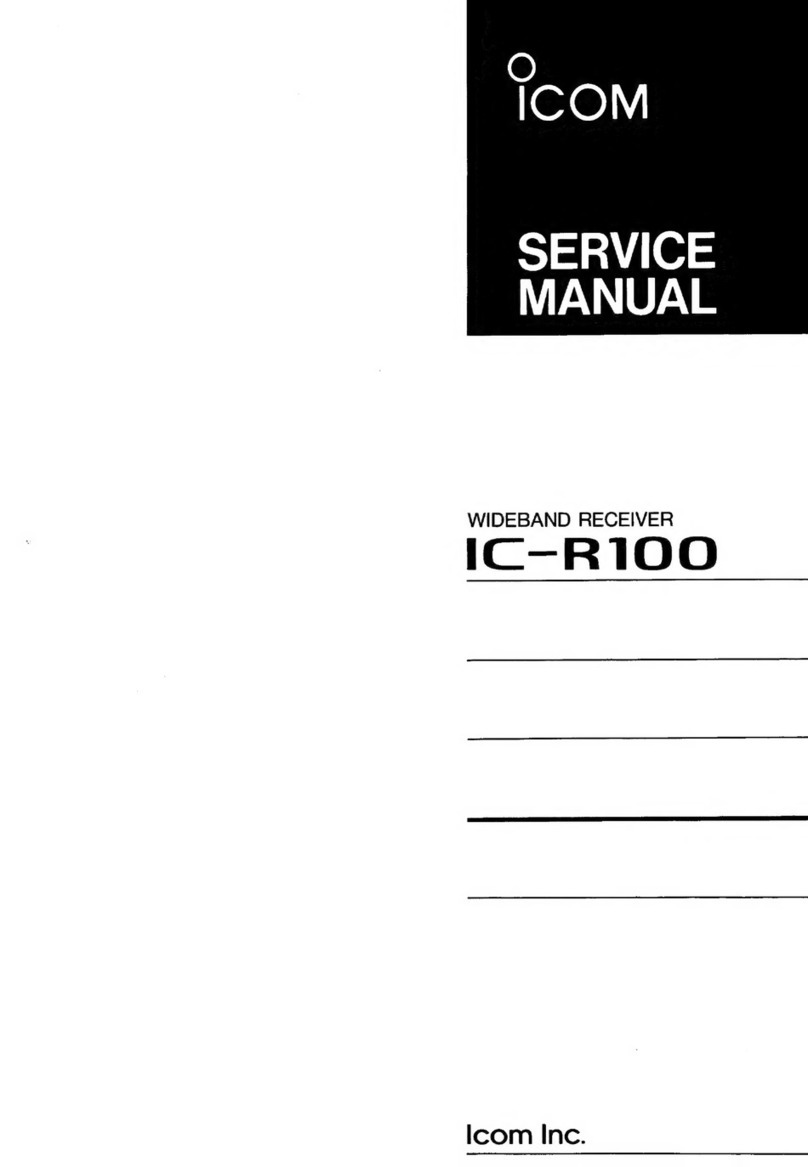
Icom
Icom IC-R100 User manual
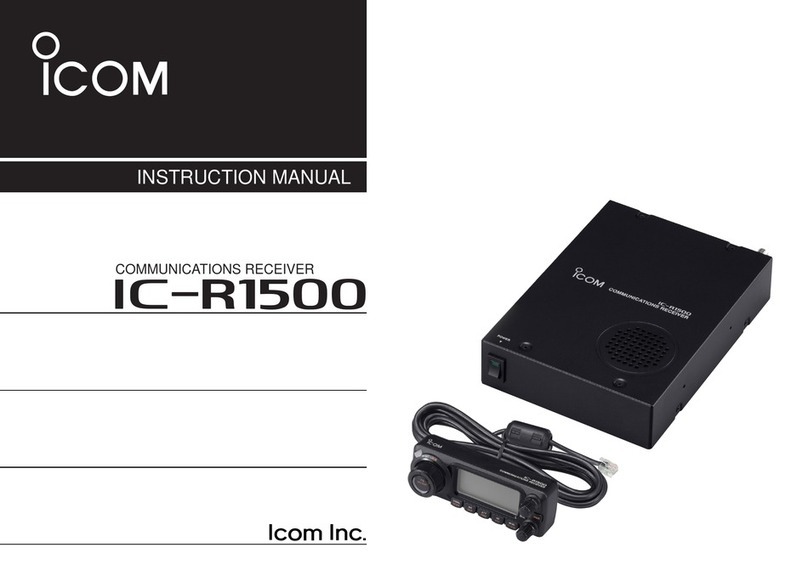
Icom
Icom IC-R1500 User manual

Icom
Icom IC-RX7 Installation and operating instructions

Icom
Icom COMMUNICATIONS RECEIVER IC-R3 User manual



